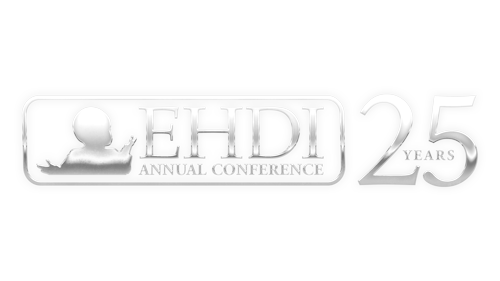2026 Early Hearing Detection & Intervention Conference
March 15-17, 2026 • Jacksonville, FL
3/10/2025 | 1:55 PM - 2:55 PM | The Deafblind Child Count: Key Ways to Collaborate to Identify Infants who are Deafblind | 304/305
The Deafblind Child Count: Key Ways to Collaborate to Identify Infants who are Deafblind
Children ages birth - 21 who are deafblind have unique needs that require specific interventions to create access and build foundational skills to achieve developmental outcomes and successful engagement in instruction. A large number of those who are deafblind are not identified as such and therefore do not have access to appropriate interventions and opportunities. The National Center on Deafblindness is using the National Deaf-Blind Child Count and other information to draw attention to under identification through a range of efforts such as analyzing and using data to highlight disparities and needs, building collaborative relationships to improve identification, and producing information to raise awareness.
Deafblindness has a profound impact on a child’s ability to access and develop communication, language, and concepts. Supporting families through the identification process is an integral first step in supporting infants and toddlers who are deafblind. A deeper understanding of their unique needs will increase the ability of families to partner with providers and identify services that support their child’s development. According to the 2022 National Deafblind Childcount, approximately 88% of children and youth who are deafblind have one or more additional disabilities, and 44% have multiple additional disabilities. Limited research and a range of anecdotal information from professionals in the field suggests the prevalence of vision and hearing impairments in the population of individuals with multiple disabilities is significantly higher than currently reported. This presentation will discuss strategies to improve identification and referral of children who are deafblind.
- Participants will increase knowledge of the under identification of infants and toddlers through observing and discussing the national deafblind child count data
- Participants will learn what collaborative relationships exist across the US between EHDI, H & V, and state deafblind projects
- Participants will identify what activities and efforts could be pursued in their states to improve identification of deafblind infants and referral to state deafblind projects.
Presentation:
3545975_18113EmmaFricke.pdf
Handouts:
3545975_18113EmmaFricke.pdf
3545975_18113EmmaFricke_1.pdf
3545975_18113EmmaFricke_2.pdf
3545975_18113EmmaFricke_3.pdf
3545975_18113EmmaFricke_4.pdf
Transcripts:
CART transcripts are NOT YET available, but will be posted shortly after the conference
Presenters/Authors
Emma Fricke
(Primary Presenter), National Center on Deafblindness, efricke@helenkeller.org;
Emma Fricke is the Identification & Referral Lead at the National Center on Deafblindness (NCDB), a Technical Assistance and Dissemination grant through the US Department of Education, Office of Special Education Programs. Prior to joining NCDB in 2018, she spent eight years working for state deafblind projects in Vermont and New York. Emma was an early childhood special educator before joining the Deafblind Technical Assistance Network.
ASHA DISCLOSURE:
Financial -
• Receives Salary for Employment from Helen Keller National Center.
Nonfinancial -
No relevant nonfinancial relationship exists.
AAA DISCLOSURE:
Financial -
Financial relationship with Helen Keller National Center.
Nature: Employment.
Nonfinancial -
No relevant nonfinancial relationship exists.
